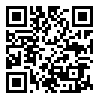1. 1- Su YC, Lin CJ, Chen KT, Lee SM, Lin JS, Tsai CC, et al. Effects of huangqi jianzhong tang on hematological and biochemical parameters in judo athletes. Acta Pharmacol Sin. 2001;22(12):1154-8. [
Link] [
PMID]
2. Ahmadizad S, El Sayed MS. The effects of graded resistance exercise on platelet aggregation and activation. Med Sci Sports Exerc. 2003;35(6):1026-32. [
Link] [
DOI:10.1249/01.MSS.0000069406.54766.C6] [
PMID]
3. Ahmadizad S, El Sayed MS, Maclaren DP. Responses of platelet activation and function to a single bout of resistance exercise and recovery. Clin Hemorheol Microcirc. 2006;35(1-2):159-68. [
Link] [
PMID]
4. Temiz A, Yalcin O, Resmi H, Baskurt OK. Can white blood cell activation be one of the major factors that affect hemorheological parameters during and after exercise?. Clin Hemorheol Microcirc. 2002;26(3):189-93. [
Link] [
PMID]
5. Lata H, W alia L. Ageing: Physiological aspects. JK Sci. 2007;9(3):111-5. [
Link]
6. Singh MA. Exercise and aging. Clin Geriatr Med. 2004;20(2):201-21. [
Link] [
DOI:10.1016/j.cger.2004.03.003] [
PMID]
7. Bassami M, Ahmadizad S, Doran D, Maclaren DP. Effects of exercise intensity and duration on fat metabolism in trained and untrained older males. Eur J Appl Physiol. 2007;101(4):525-32. [
Link] [
DOI:10.1007/s00421-007-0523-7] [
PMID]
8. Donato AJ, Uberoi A, Wray DW, Nishiyama S, Lawrenson L, Richardson RS. Differential effects of aging on limb blood flow in humans. Am J physiol Heart Circ Physiol. 2006;290(1):H272-8. [
Link] [
DOI:10.1152/ajpheart.00405.2005] [
PMID]
9. Herrera MD, Mingorance C, Rodriguez Rodriguez R, Alvarez de Sotomayor M. Endothelial dysfunction and aging: An update. Ageing Res Rev. 2010;9(2):142-52. [
Link] [
DOI:10.1016/j.arr.2009.07.002] [
PMID]
10. Bonilla JF, Narváez R, Chuaire L. Sports as a cause of oxidative stress and hemolysis. Colombia Med. 2005;36(4):275-80. [Spanish] [
Link]
11. Shaskey DJ, Green GA. Sports haematology. Sports Med. 2000;29(1):27-38. [
Link] [
DOI:10.2165/00007256-200029010-00003]
12. Senturk UK, Gunduz F, Kuru O, Kocer G, Ozkaya YG, Yesilkaya A, et al. Exercise-induced oxidative stress leads hemolysis in sedentary but not trained humans. J Appl Physiol. 2005;99(4):1434-41. [
Link] [
DOI:10.1152/japplphysiol.01392.2004] [
PMID]
13. Ajmani RS, Rifkind JM. Hemorheological changes during human aging. Gerontol. 1998;44(2):111-20. [
Link] [
DOI:10.1159/000021993] [
PMID]
14. Coppola L, Caserta F, De Lucia D, Guastafierro S, Grassia A, Coppola A, et al. Blood viscosity and aging. Arch Gerontol Geriat. 2000;31(1):35-42. [
Link] [
DOI:10.1016/S0167-4943(00)00063-7]
15. Kovacs A, Szikszai Z, Varady E, Imre S. Study on the hemorheological parameters of oldest-old residents in the East-Hungarian city, Debrecen. Clin Hemorheol Microcirc. 2006;35(1-2):83-8. [
Link] [
PMID]
16. Santos Silva A, Rebelo MI, Castro EMB, Belo L, Guerra A, Rego C, et al. Leukocyte activation, erythrocyte damage, lipid profile and oxidative stress imposed by high competition physical exercise in adolescents. Clin Chim Acta. 2001;306(1-2):119-26. [
Link] [
DOI:10.1016/S0009-8981(01)00406-5]
17. Cywinska A, Szarska E, Kowalska A, Ostaszewski P, Schollenberger A. Gender differences in exercise–induced intravascular haemolysis during race training in thoroughbred horses. Res Vet Sci. 2011;90(1):133-7. [
Link] [
DOI:10.1016/j.rvsc.2010.05.004] [
PMID]
18. Ahmadizad S, El Sayed MS. The acute effects of resistance exercise on the main determinants of blood rheology. J Sports Sci. 2005;23(3):243-9. [
Link] [
DOI:10.1080/02640410410001730151] [
PMID]
19. Ahmadizad S, El sayed MS, Bassami M, Maclaren DP. Effects of resistance exercise intensity on the main Determinants of blood rheology. Cell Mol Biol Lett. 2004;9(2):69-71. [
Link]
20. Brun JF. Exercise hemorheology as a three acts play with metabolic actors: Is it of clinical relevance?. Clin Hemorheol Microcirc. 2002;26(3):155-74. [
Link] [
PMID]
21. Dill DB, Costill DL. Calculation of percentage changes in volumes of blood, plasma, and red cells in dehydration. J Appli Physiol. 1974;37(2):247-8. [
Link] [
DOI:10.1152/jappl.1974.37.2.247] [
PMID]
22. Taddei S, Virdis A, Ghiadoni L, Versari D, Salvetti A. Endothelium, aging, and hypertension. Curr Hypertens Rep. 2006;8(1):84-9. [
Link] [
DOI:10.1007/s11906-006-0045-4]
23. Iemitsu M, Maeda S, Otsuki T, Sugawara J, Kuno S, Ajisaka R, et al. Arterial stiffness, physical activity, and atrial natriuretic Peptide gene polymorphism in older subjects. Hypertens Res. 2008;31(4):767-74. [
Link] [
DOI:10.1291/hypres.31.767] [
PMID]
24. Nageswari K, Banerjee R, Gupte RV, Puniyani RR. Effects of exercise on rheological and microcirculatory parameters. Clin Hemorheol Microcirc. 2000;23(2-4):243-7. [
Link] [
PMID]
25. Brun JF, Belhabas H, Granat M, Sagnes C, Thoni G, Micallef JP, et al. Postexercise red cell aggregation is negatively correlated with blood lactate rate of disappearance. Clin Hemorheol Microcirc. 2002;26(4):231-9. [
Link] [
PMID]
26. Gurcan N, Erbas D, Ergen E, Bilgehan A, Dundar S, Aricioglu A, et al. Changes in blood haemorheological parameters after submaximal exercise in trained and untrained subjects. Physiol Res. 1998;47(1):23-7. [
Link] [
PMID]
27. Telford RD, Sly GJ, Hahn AG, Cunningham RB, Bryant C, Smith JA. Footstrike is the major cause of hemolysis during running. J Appl Physiol. 2003;94(1):38-42. [
Link] [
DOI:10.1152/japplphysiol.00631.2001] [
PMID]
28. Gornicki A. The hemolysis kinetics of psoriatic red blood cells. Blood Cells, Mol Dis. 2008;41(2):154-7. [
Link] [
DOI:10.1016/j.bcmd.2008.04.003] [
PMID]
29. Sureda A, Tauler P, Aquilo A, Fuentespina E, Cordova A, Tur JA, et al. Blood cell no synthesis in response to exercise. Nitric Oxide. 2006;15(1):5-12. [
Link] [
DOI:10.1016/j.niox.2005.11.004] [
PMID]
30. Wu HJ, Chen KT, Shee BW, Chang HC, Huang YJ, Yang RS. Effects of 24h ultra-marathon on biochemical and hematological parameters. World J Gastroenterol. 2004;10(18):2711-4. [
Link] [
DOI:10.3748/wjg.v10.i18.2711] [
PMCID]







